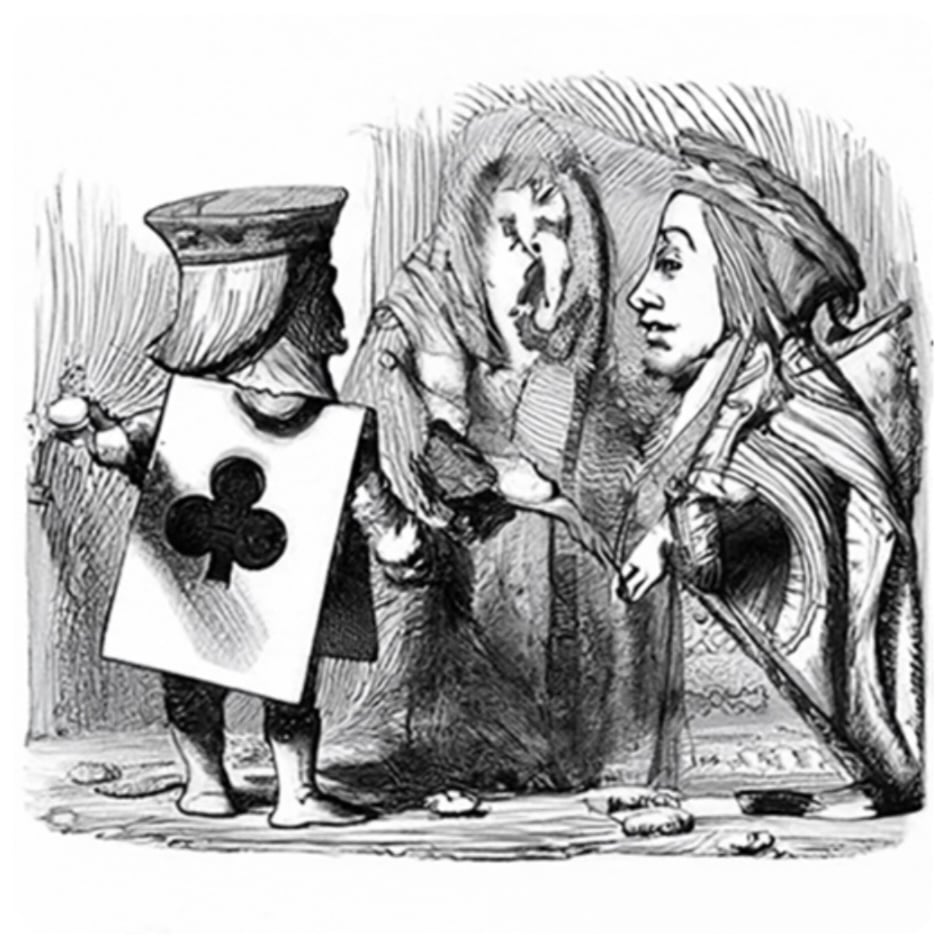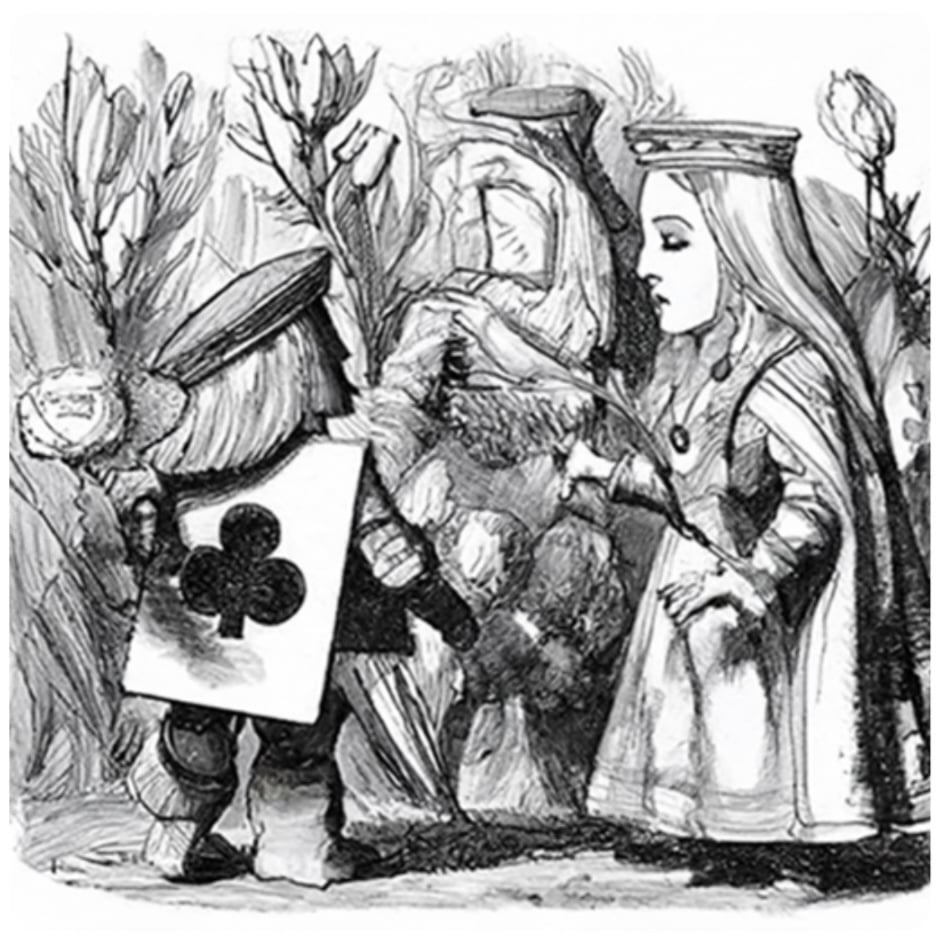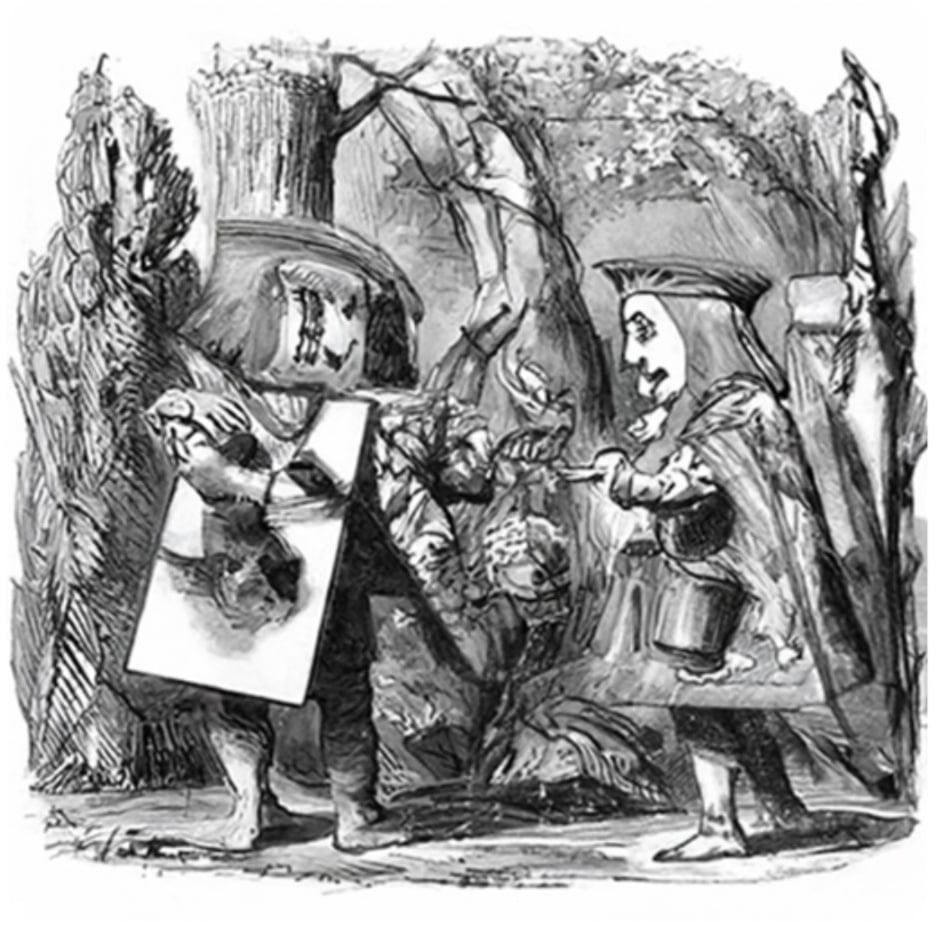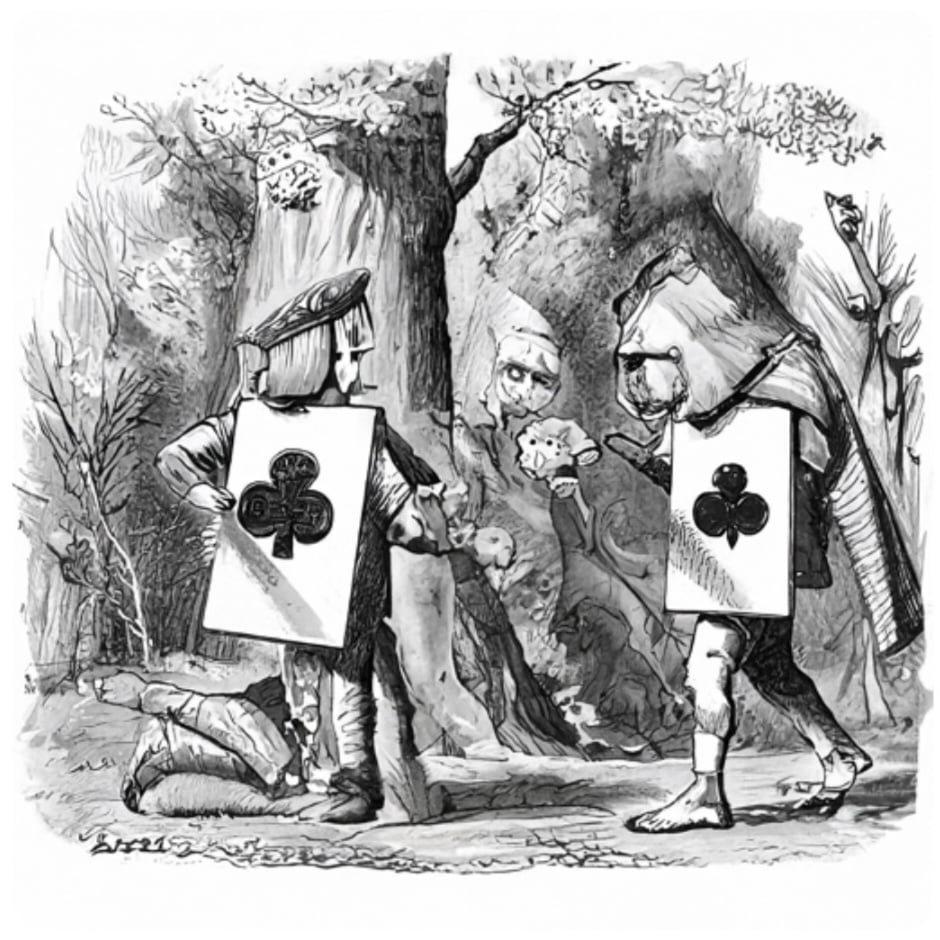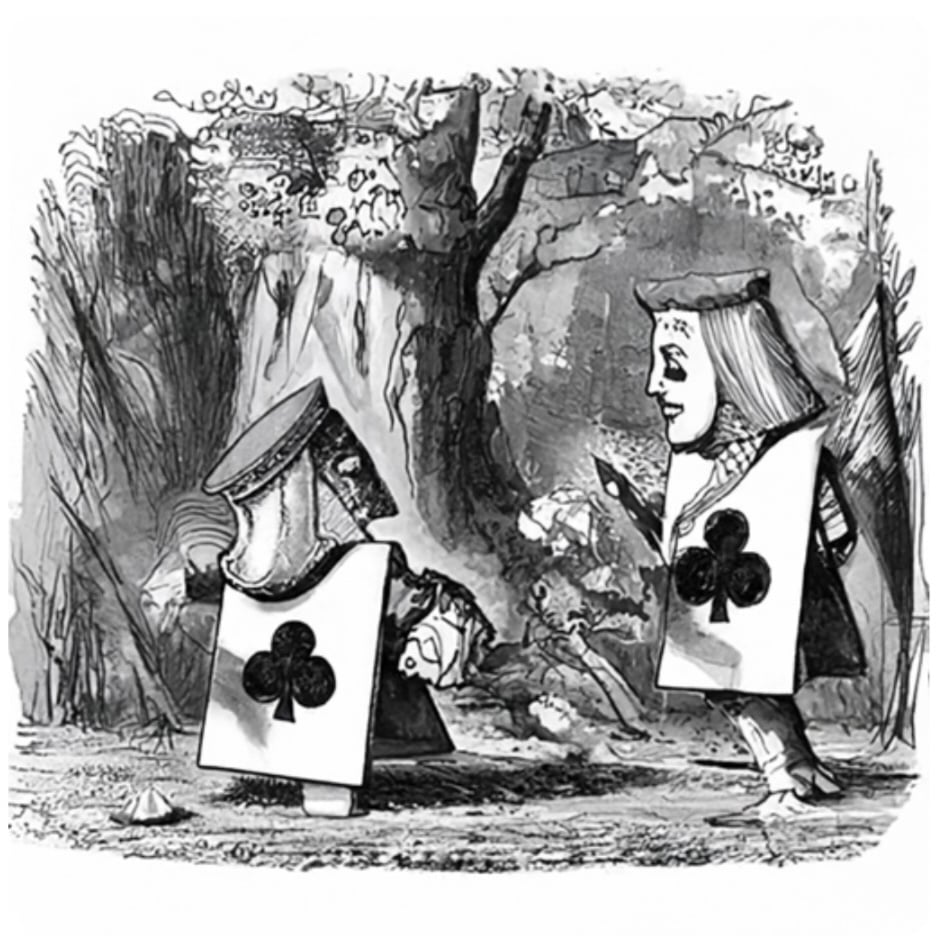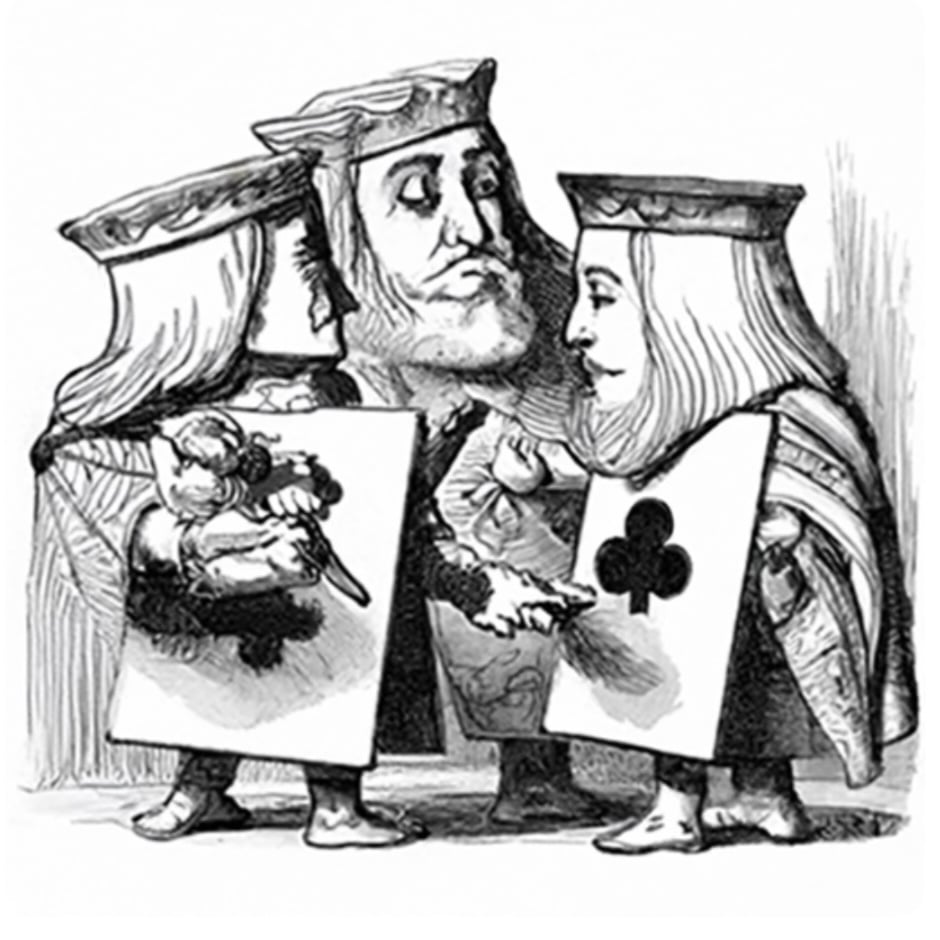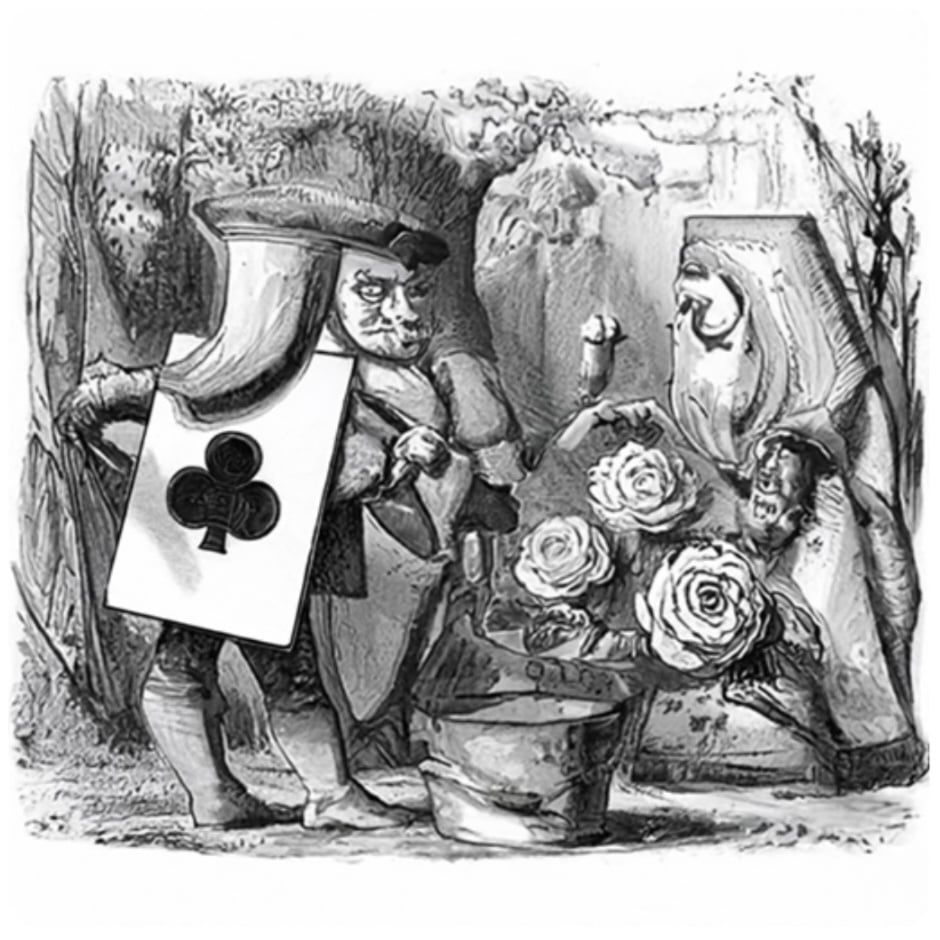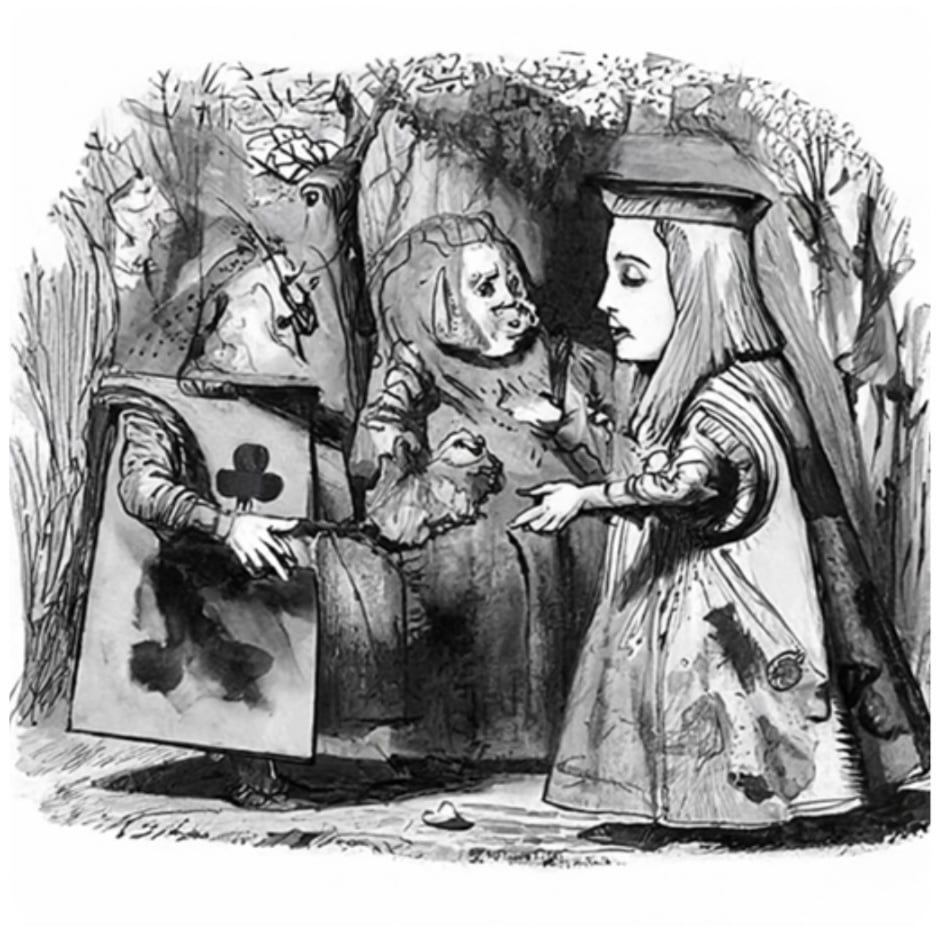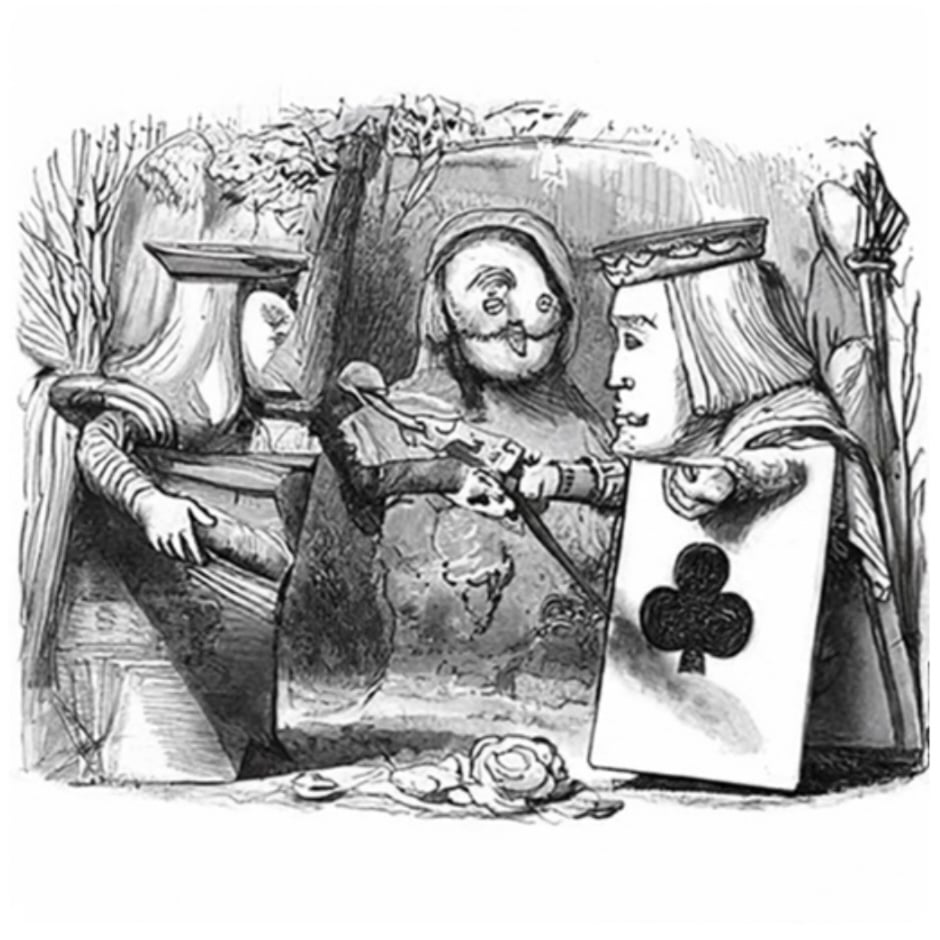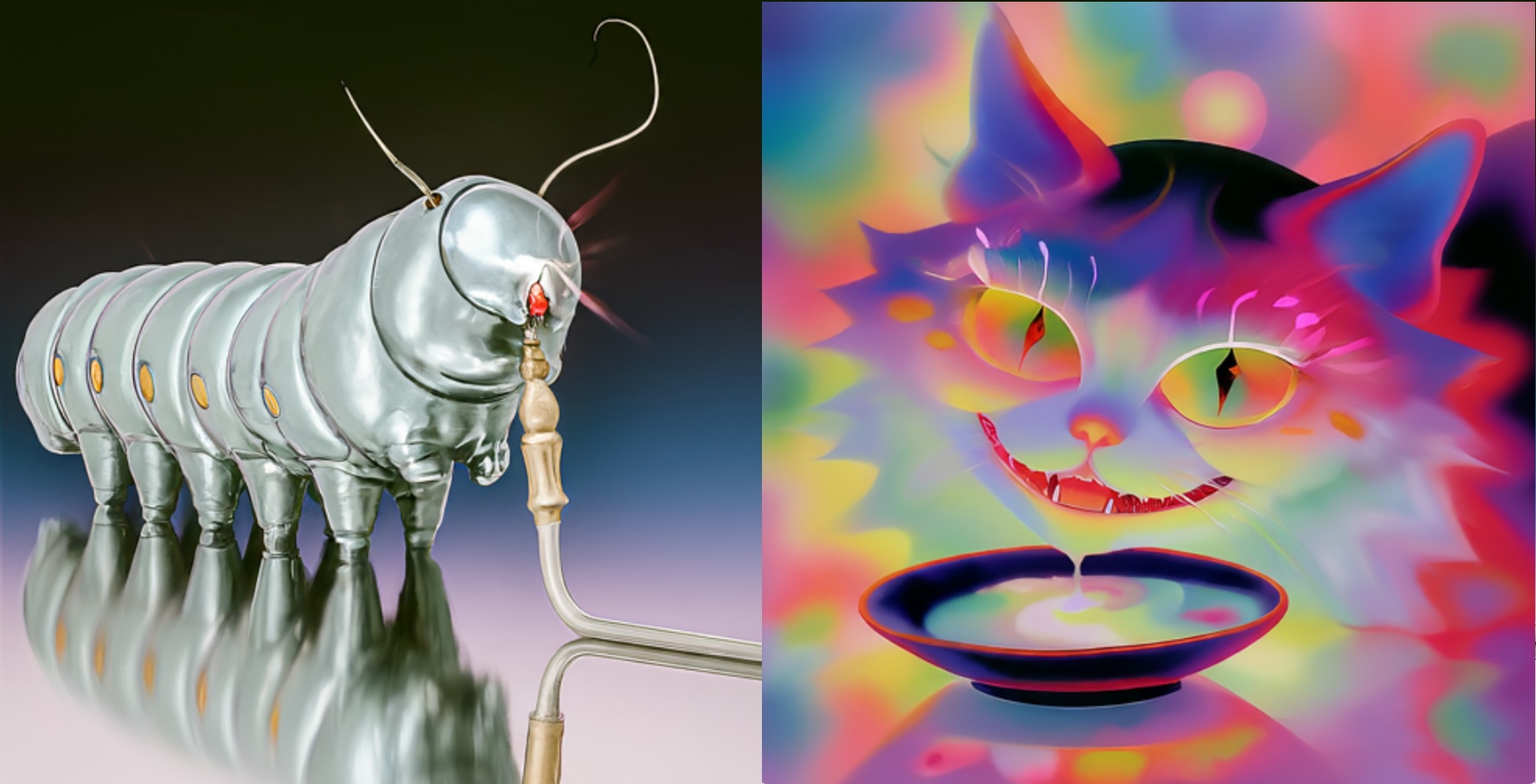Imagine someone gives you a new edition of a beloved picture book, illustrated with thousands of newly discovered illustrations by the original artist. As you look through it, you notice that a lot of the new images feel like weird, off-putting outtakes. Or they are just confusing.
“Don’t worry,” your friend says. “The great thing is, there are so many pictures that if you keep flipping, you’ll eventually get something you want.”
This would not be a good gift! Yet such is the value proposition of Google Labs’ recent Infinite Wonderland experiment.
This online project takes as its foundation Lewis Carroll’s Alice’s Adventures in Wonderland (1865), and the 42 famous pictures by the Victorian illustrator John Tenniel (1820–1914) from its first edition. Google Labs has used A.I. to clone Tenniel’s style, so that if you click on any line in the Carroll text, you generate a brand new A.I.-powered picture that looks like one of his original illustrations.
To bring things further into the present day, four contemporary illustrators also lend their styles to Infinite Wonderland’s experiment: Eric Hu, Shawna X, Erik Carter, and Haruko Hayakawa.
Now, at this particular stage of A.I. hype, a project like Infinite Wonderland is unlikely to impress anyone on its own. (It is actually meant to show off a technique called StyleDrop, which allows Google’s A.I. to mimic any artist’s style using just a few source examples, the company claims).
On the flip side, the fact that Infinite Wonderland often generates botched or unsettling images is unlikely to be that surprising—though I really fail to see how that is not considered a disabling bug in this case, given that the proposition is a kid’s storybook. (Every image features the funny disclaimer: “A.I. outputs may sometimes be offensive, inaccurate, or too surreal. If so, please regenerate.”)
Just consider one of Tenniel’s most famous images, showing the moment that Alice meets the Caterpillar:
Illustration from Alice’s Adventures in Wonderland, by John Tenniel.
If you click on the relevant lines of Infinite Wonderland, you will likely get something like this:
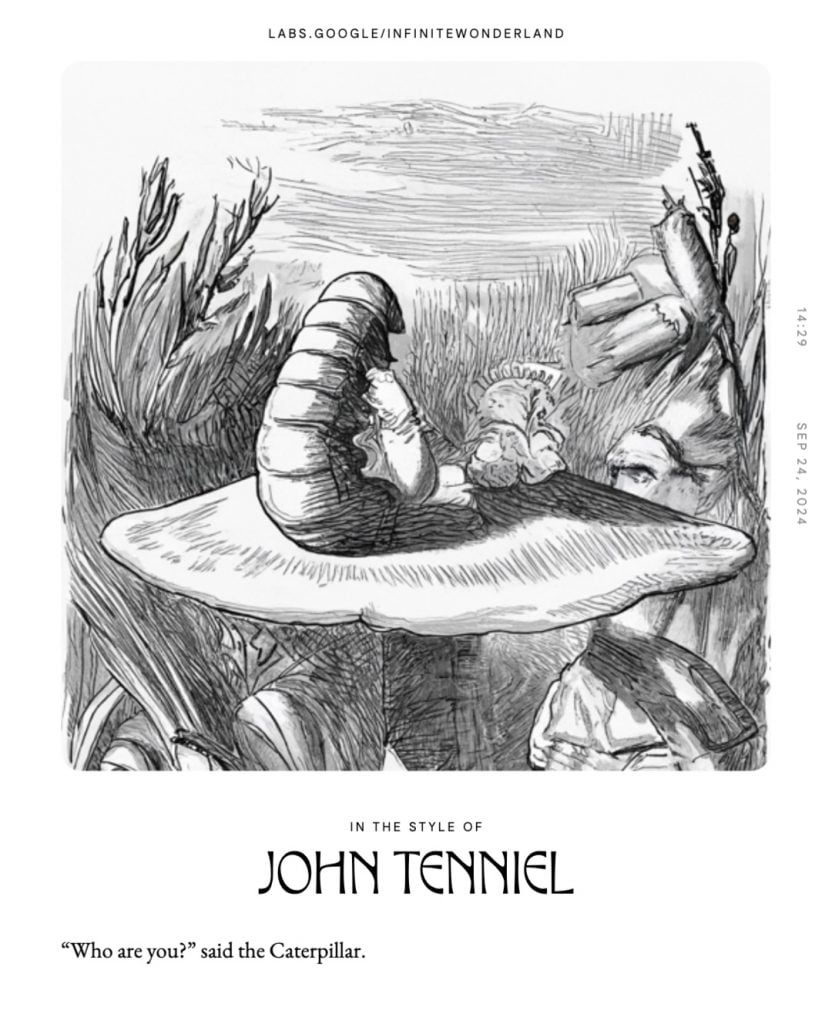
Illustration from Infinitive Wonderland in the style of John Tenniel.
This is not an improvement.
What about the other, living illustrators? Here’s a rendering the A.I. made of the same scene in the style of Erik Carter, who specializes in pixel art–themed graphics. For some reason, it shows the Caterpillar on the ground looking up at Alice, instead of the other way around, as in the text. And the Caterpillar’s expression is enthusiastic, instead of “languid, sleepy,” per Carroll. And he’s hookah-less.
These are basic errors that literally any illustrator would have addressed.
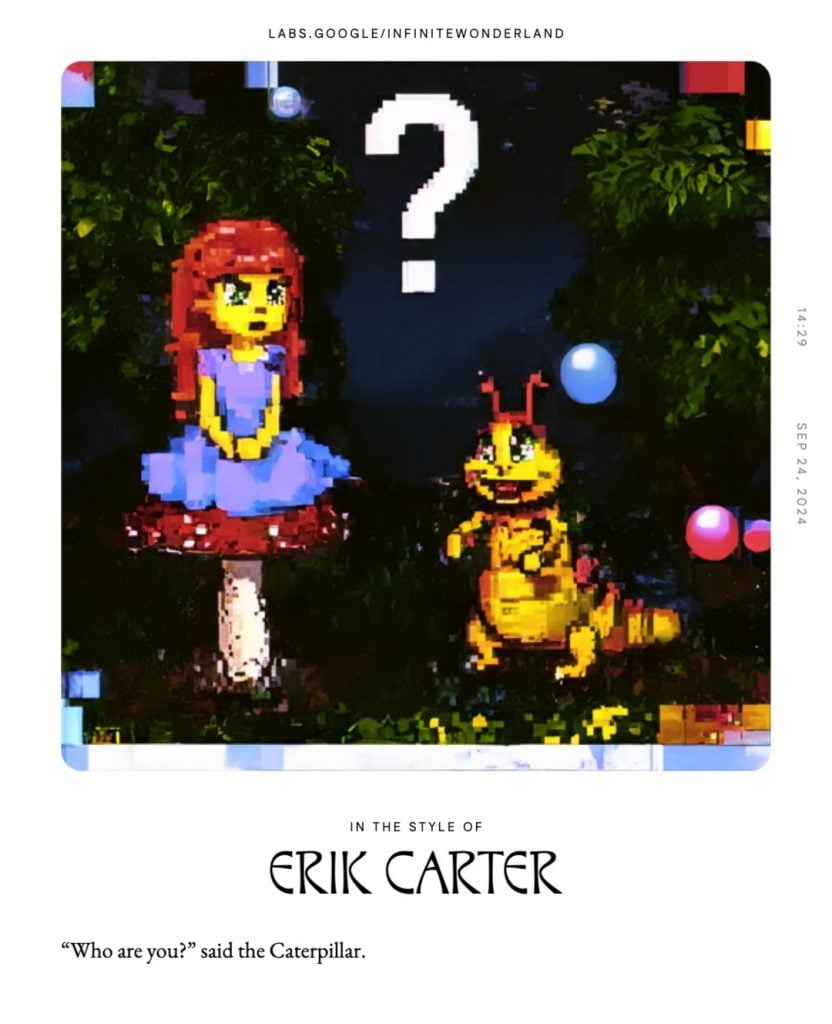
Illustration from Infinitive Wonderland in the style of Erik Carter.
Refresh to get an illustration of the same scene in the style of Shawna X. Now, for some reason, our Caterpillar is lighting up a pipe for Alice.
Now that’s awesome. Unintentionally awesome, but awesome.
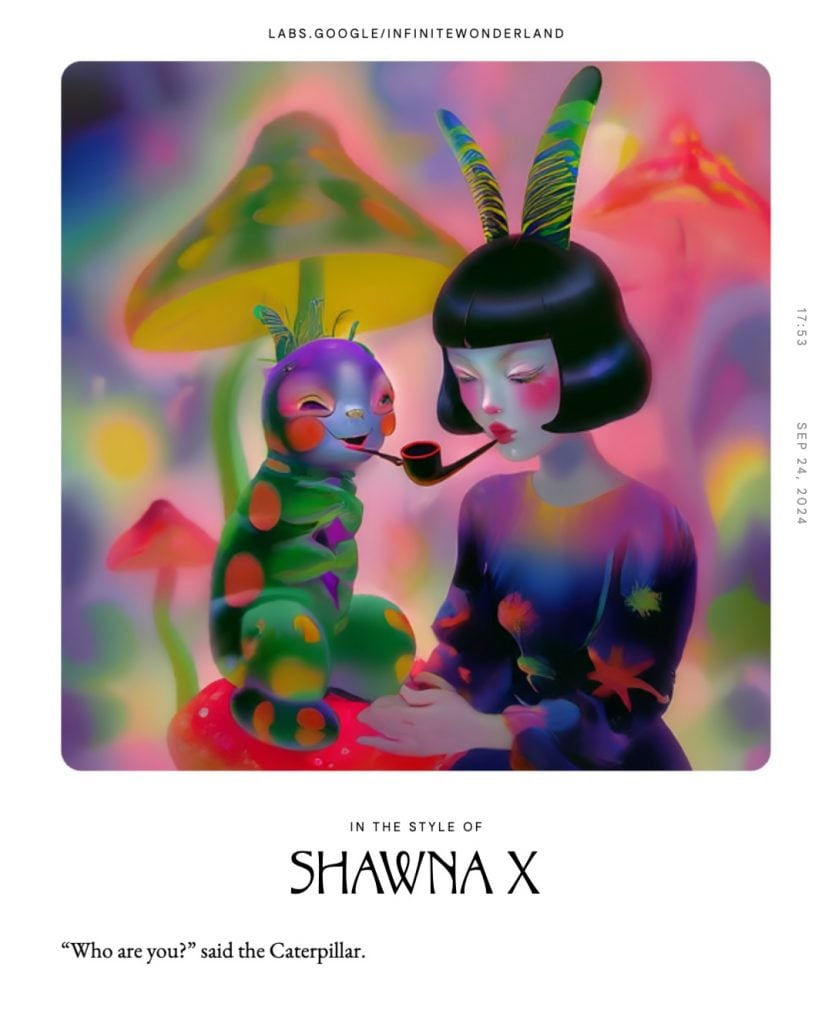
Illustration from Infinitive Wonderland in the style of Shawna X.
Any artist making pictures for a book would have hundreds of ideas, and then winnow them down to a few that were most appropriate. In practice, Infinite Wonderland just outsources this work to the reader, who must click and click again until they get something they kind of like, sort of how Ikea makes furniture cheaper by outsourcing its assembly to you. Except the Ikea table is finished when it’s finished, and Infinite Wonderland is unstable by design, constantly moving around like a bad dream.
Again, all this is bad—but not even really remarkably bad when it comes to corporate A.I. initiatives. Infinite Wonderland was neither good enough nor bad enough to generate much attention when it was released a few months ago (outside of a credulous piece in Fast Company). The reason I wanted to say something about it is the subject matter.
Obviously, the whole reason to use Alice in Wonderland is because of its proto-Surrealism and its associations with wonder and mind-expanding experiences. A.I. art is often associated with surreal juxtapositions (which is why DALL-E was named after Dalí). But it turns out that there’s something about the specific A.I. procedure Google Labs is using that is uniquely bad at surrealism.
Take this illustration by Tenniel, which shows what happens to Alice when she eats the cake that makes her grow, and her body expands “like the largest telescope that ever was.”
Here is Tenniel’s illustration:

Illustration from Alice’s Adventures in Wonderland, by John Tenniel.
And then here’s how Infinite Wonderland interprets the same scene in Tenniel’s style:
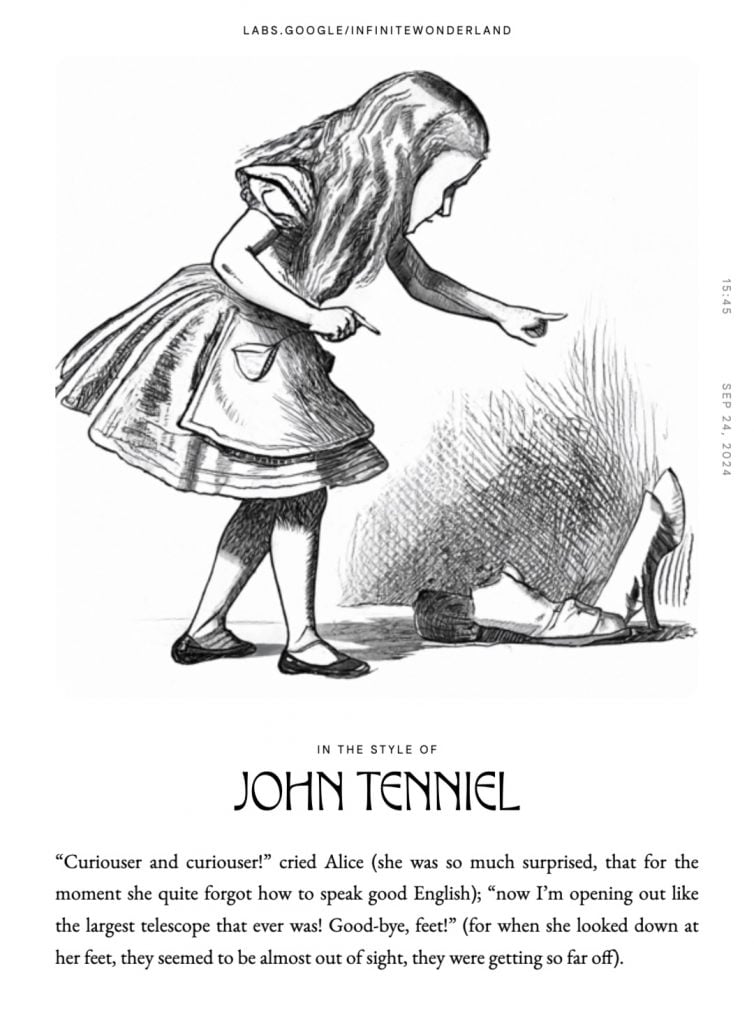
Illustration from Infinitive Wonderland in the style of John Tenniel.
Stupidly, it zeroes in on the idea of Alice looking at her own feet, and then interprets this as Alice looking at a pair of shoes. This is just a garbled reading of the text.
I guess you can chalk that one up to the A.I. failing to pick out what is the most interesting element of the passage to illustrate. Well, what about another passage? Here’s Tenniel’s original depiction of Alice playing a game of croquet, where the mallets are flamingos and the croquet balls are curled-up hedgehogs. She finds that the bird keeps twisting around to look at her face every time she tries to take a swing.
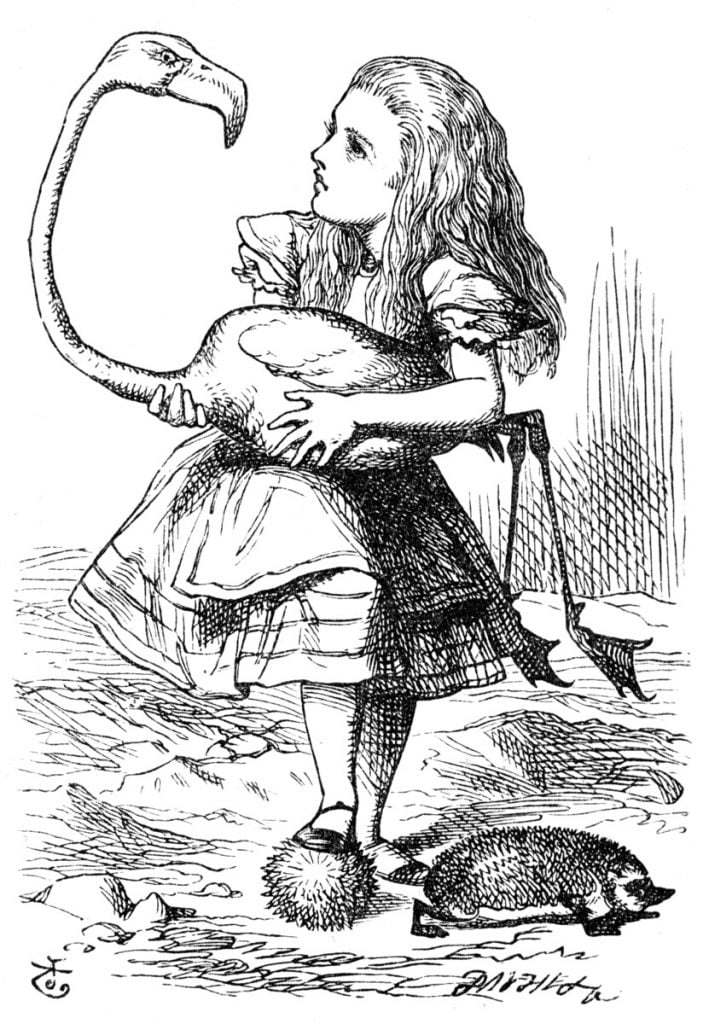
Illustration from Alice’s Adventures in Wonderland, by John Tenniel.
If you locate the corresponding passage and click on it, Infinite Wonderland really, really does not want to give you anything close to that whimsical scene—in whatever style you try.
Here are examples in the styles of all 5 artists from the project:
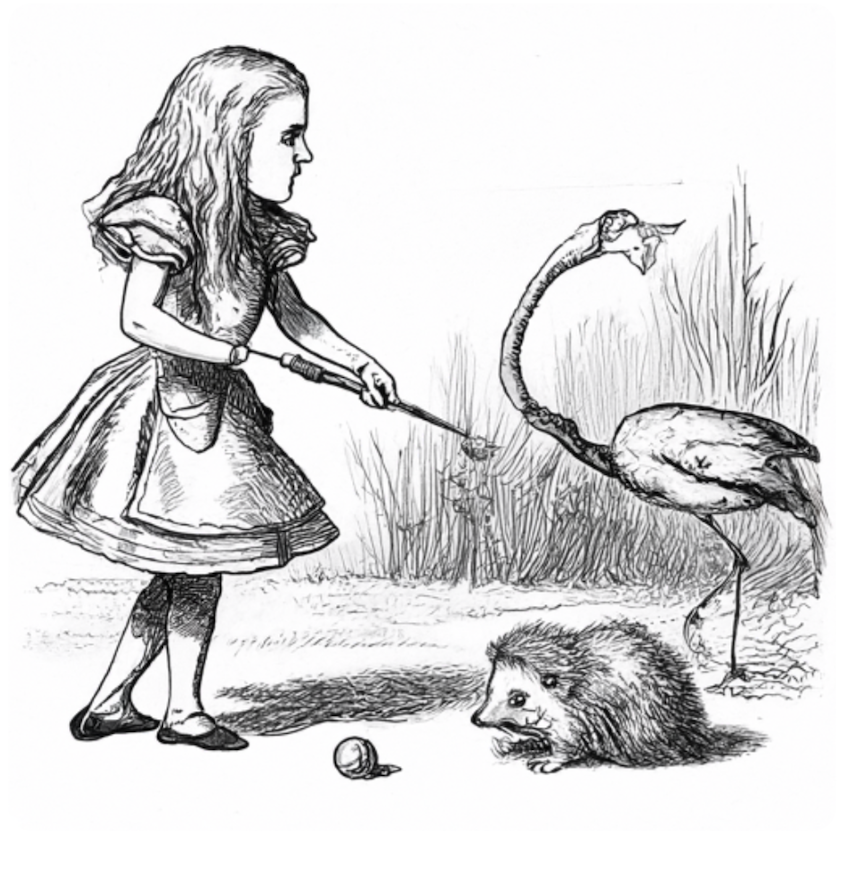

Illustration from Infinitive Wonderland in the style of Eric Hu.
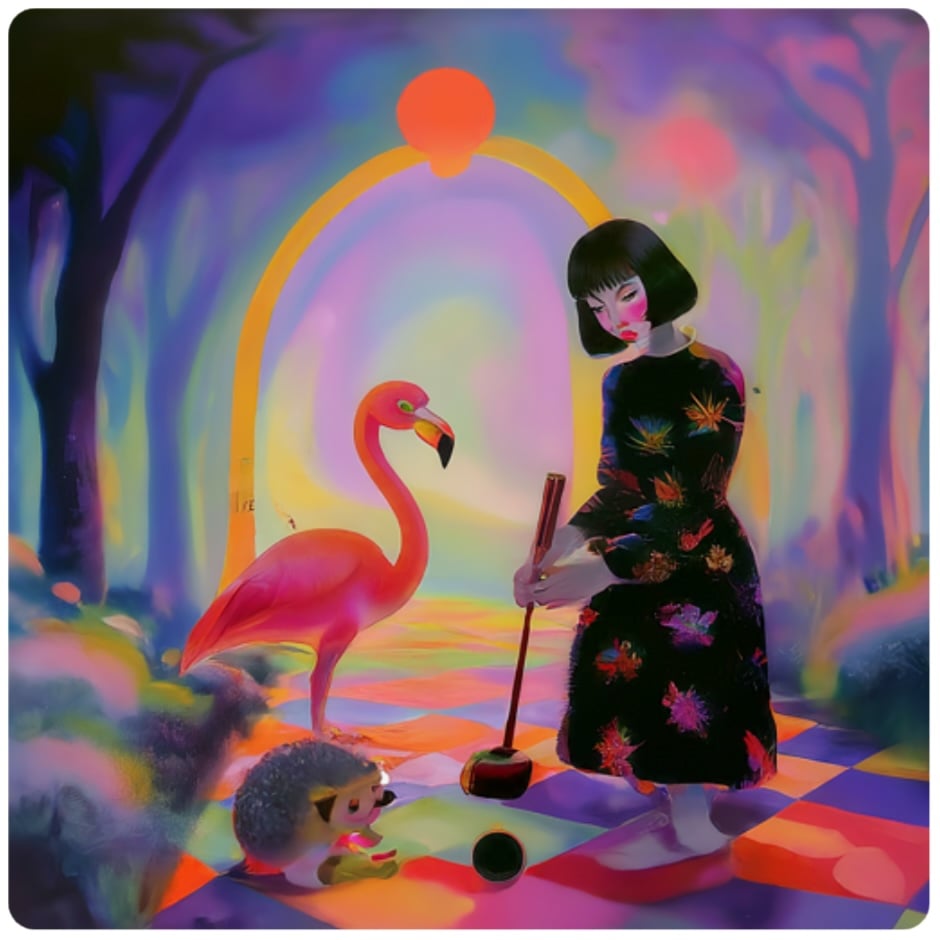
Illustration from Infinitive Wonderland in the style of Shawna X.
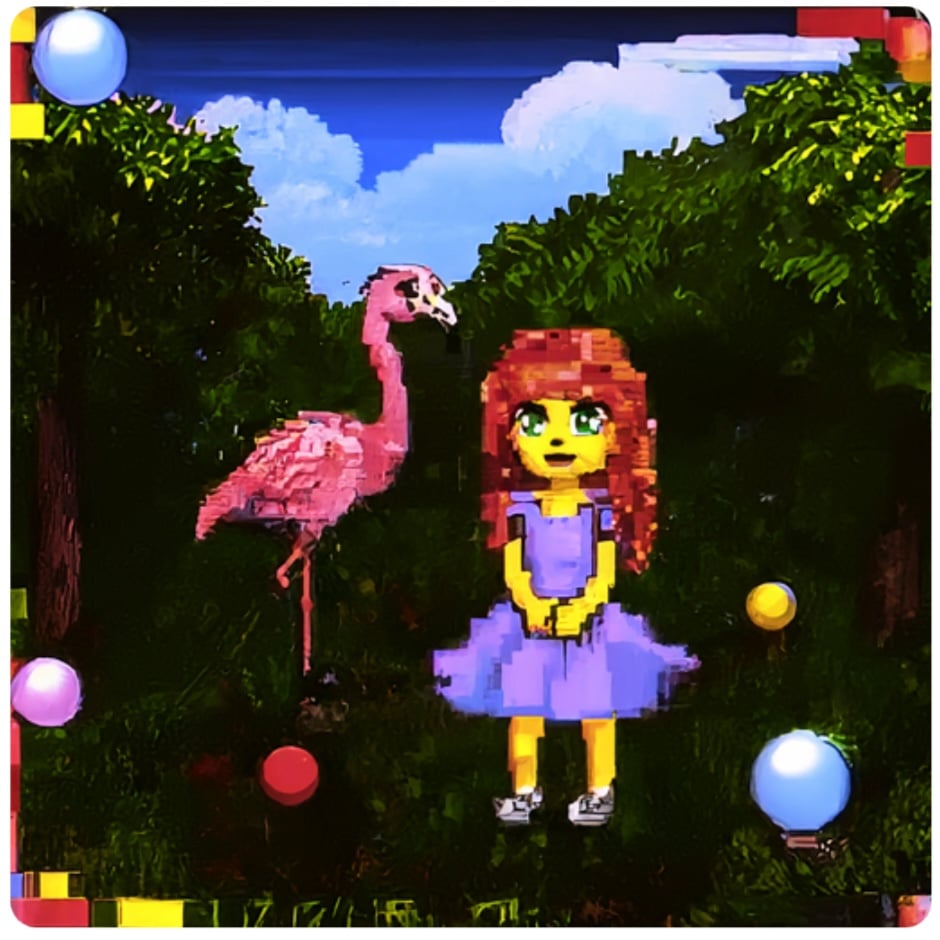
Illustration from Infinitive Wonderland in the style of Erik Carter.
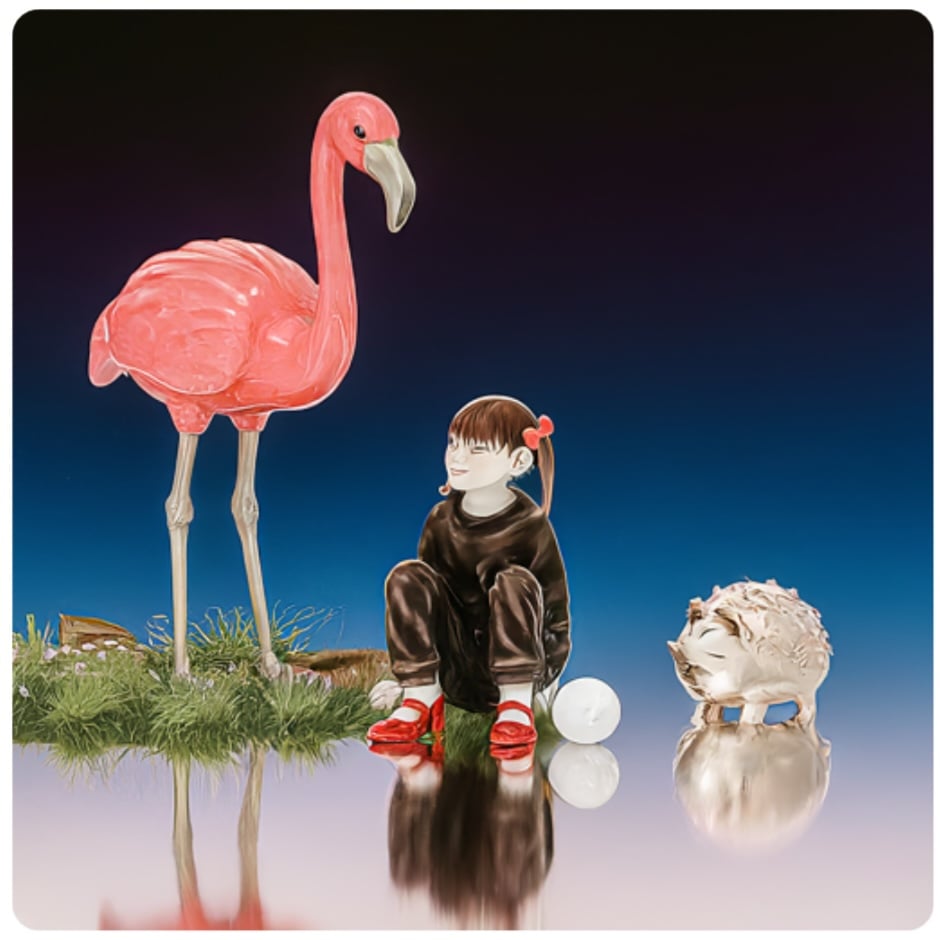
Illustration from Infinitive Wonderland in the style of Haruko Hayakawa.
The results are not just not surreal, they are anti-surreal. They have taken the lively Lewis Carroll text and rendered it in the dullest possible form, seemingly because Google’s A.I. insists on interpreting “playing croquet with a flamingo” as “playing croquet next to a flamingo.”
Which makes some sense, from what I understand. The A.I. works by giving you the most probable answer to a query. The entire charm of the idea of flamingo-based croquet is that it is an unexpected image—but Infinite Wonderland‘s logic pushes in the other direction in interpreting Carroll. What you get is a very sophisticated technical procedure for de-surrealizing a story.
It’s not like you can’t use A.I. to make surreal stuff—people do that all the time. But that takes at least some thought about actual meaning of specific passages, and Infinite Wonderland is so janky that I can’t escape the feeling that it’s made by people who don’t think very much about what artists do and who don’t look at artworks with much interest. The entire way of thinking that Google Labs is selling, it seems to me, involves putting less thought into images.
Instead of using Alice’s adventure as a magic portal to imagination, Infinite Wonderland fills it in with slop. Which is a thought I find bleak enough that I am going to end this with something funny. So, here are just 10 successive tries at using this state-of-the-art, gas-guzzling Artificial Intelligence by one of the largest and most powerful tech companies in the world to do the same job that John Tenniel did with pencil and woodblock technology back in 1865.
Here’s the original (from the opening of Chapter VII: “The Queen’s Croquet-Ground”):
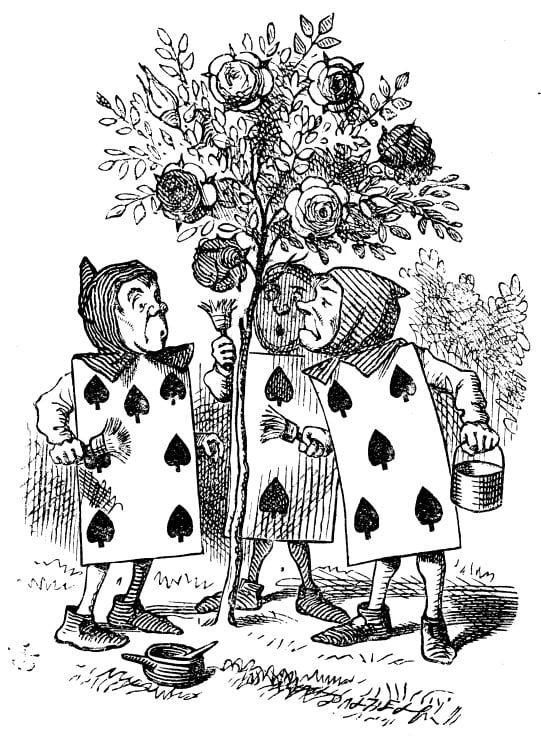
Illustration from Alice’s Adventures in Wonderland, by John Tenniel.
And now, behold, the future of art!
